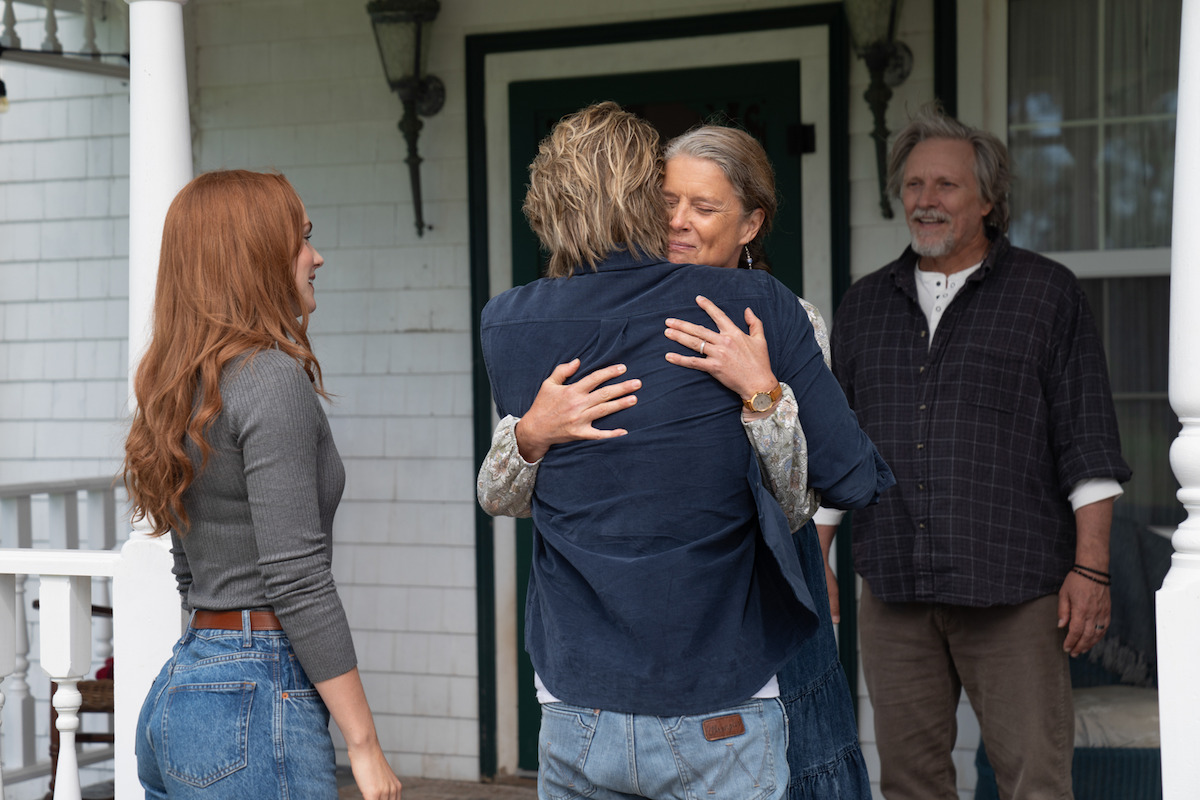Amid the lush, fog-shrouded forests of Timberlake, Nova Scotia, Sullivan’s Crossing Season 3 unfolds a gripping narrative that extends beyond personal heartaches into the very soul of the community. Streaming on Netflix since August 11, 2025, following its emotional CW finale on July 16, this adaptation of Robyn Carr’s novels introduces a shadowy antagonist whose ambitions threaten the idyllic haven of Sullivan’s Crossing. At the forefront is Glenn Perry (Dean Armstrong), a slick real estate developer whose plans for a luxury resort nearby cast a long, ominous shadow over the town’s future. As environmental dangers surface and investigations deepen, the season explores themes of preservation, greed, and collective resilience—hinting at conflicts without fully resolving the battles ahead, leaving audiences to speculate on the fate of this cherished landscape.

Glenn Perry emerges as a formidable force early in the season, his polished exterior masking ruthless intentions. Arriving in Timberlake with blueprints and promises of economic boon, he eyes the land adjacent to Sullivan’s Crossing for his upscale development. This resort, touted as a high-end escape for urban elites, poses an immediate threat: diverting tourists from the humble family campground that has been the Sullivan legacy for generations. Sully (Scott Patterson), the campground’s steadfast owner, confronts Glenn in a tense standoff, his frustration boiling over at the lack of legal recourse to halt the project. “This land isn’t just dirt—it’s our history,” Sully growls, encapsulating the clash between progress and tradition. Glenn, undeterred and armed with permits, brushes off the concerns, setting the stage for a simmering feud that permeates the episodes.
The peril escalates when mysterious poisonings plague the town, adding a layer of intrigue and urgency. Residents report unexplained illnesses—dizziness, nausea, and skin irritations—that baffle local authorities. Maggie Sullivan (Morgan Kohan), leveraging her neurosurgical expertise, steps into the role of impromptu detective, piecing together clues that point to environmental contamination. Her investigation reveals traces of arsenic seeping into the ecosystem, disrupting the delicate lichen growth that symbolizes Timberlake’s pristine wilderness. Linked directly to Glenn’s construction activities—perhaps runoff from site preparations or careless waste disposal—this discovery transforms the threat from abstract to alarmingly tangible. With the help of Jacob Cranebear (Joel Oulette), a young community member attuned to the land’s Indigenous heritage, Maggie delves deeper, collecting samples under cover of night and analyzing data in makeshift labs. Their partnership highlights the show’s emphasis on cultural respect and environmental stewardship, as Jacob shares ancestral knowledge about the area’s fragile balance.

Yet, the narrative doesn’t rush to conclusions; it teases escalating dangers without unveiling the full extent of the fallout. Will the poisonings claim more victims, or force a town-wide evacuation? Glenn’s moral ambiguity adds complexity—he’s not a cartoonish villain but a businessman driven by profit, occasionally showing flickers of doubt during confrontations. Maggie’s probe uncovers potential corporate cover-ups, hinting at broader implications like regulatory loopholes or hidden alliances. The tension builds through atmospheric scenes: foggy mornings where contaminated streams glint ominously, or heated town hall meetings where residents voice fears of losing their way of life. Armstrong’s portrayal of Glenn is chillingly charismatic, making viewers question if redemption or reckoning awaits.
This environmental arc doesn’t stand alone; it subtly intertwines with the personal dramas that define the season. Maggie’s involvement pulls her closer to Cal Jones (Chad Michael Murray), their romance tested by the stress of the crisis—perhaps a shared stakeout sparks intimate revelations, or disagreements over confrontation strategies strain their bond. A resurfaced letter from her past adds emotional weight, leaving their future uncertain. Meanwhile, Edna Cranebear (Andrea Menard) battles her own health scare, a brain tumor that mirrors the town’s “sickness,” drawing parallels between personal and communal healing. Her surgery, fraught with risks, intersects with the poisonings when environmental factors are considered in her diagnosis.

Sully’s budding relationship with Helen Culver (Kate Vernon), the romance novelist, offers a lighter contrast, as her outsider perspective questions the development’s impact on creativity and solitude. Their evolving connection might inspire Sully to fight harder for the land, or tempt him toward new horizons abroad. Other threads weave in: Sydney (Lindura) and Rafe (Dakota Taylor) debate commitment amid the uncertainty, while Rob Shandon (Reid Price) rebuilds his diner, fostering community unity against external threats. Jacob and Lola’s (Amalia Williamson) budding romance blooms against the backdrop of activism, infusing youth and hope into the struggle.
The season’s visual storytelling amplifies the peril—sweeping drone shots of construction scars marring the landscape, contrasted with intimate close-ups of affected wildlife. The soundtrack, with its haunting acoustic strains, underscores the creeping dread, turning everyday settings into suspenseful arenas.
As Sullivan’s Crossing Season 3 progresses, the environmental threat looms larger, a catalyst for growth and conflict. Maggie’s leadership shines, but the outcomes remain shrouded: Will the resort rise, poisoning the town’s spirit, or will unity prevail? With Season 4 confirmed by CTV in June 2025, these questions linger like mist over the crossing, inviting fans to ponder the cost of progress in a world worth protecting.